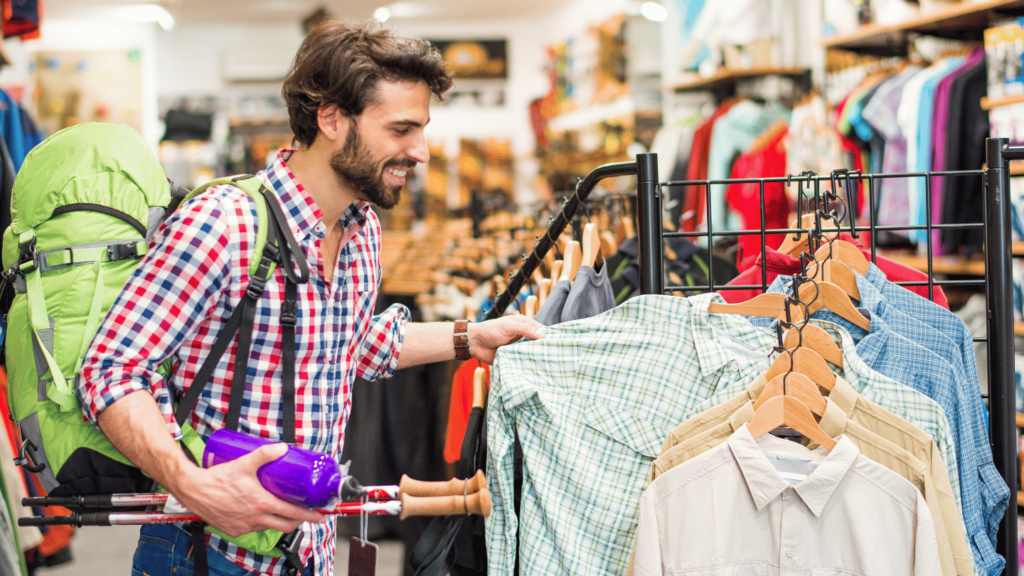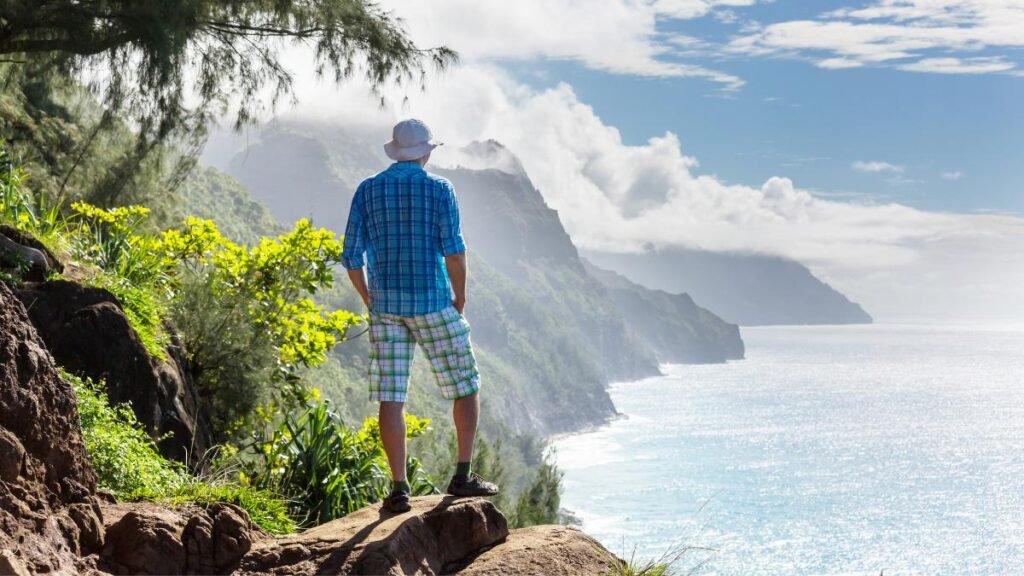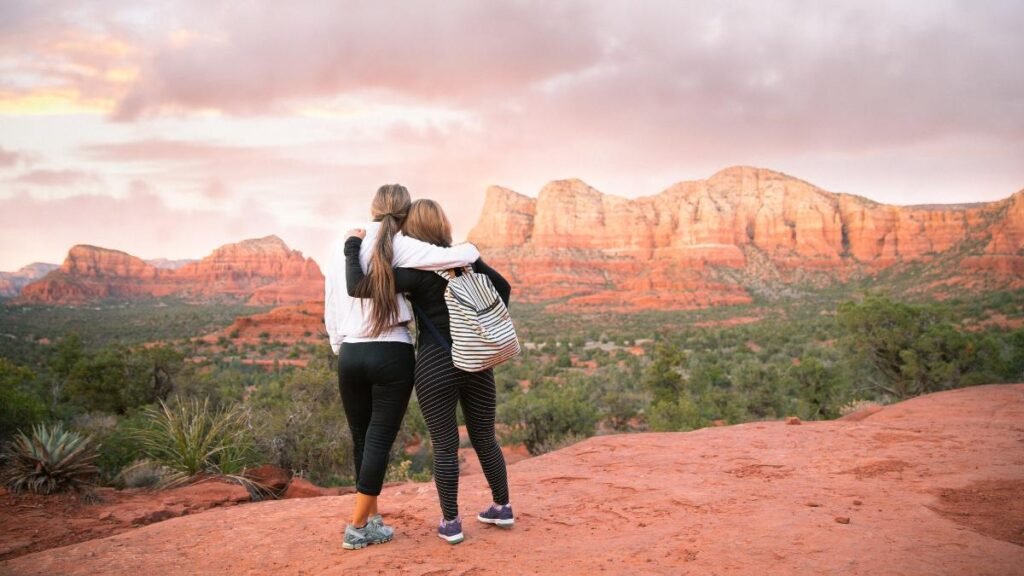Have you ever stood at the foot of a mountain, overwhelmed by its majesty, yet clueless about what clothes to wear hiking there? That was me, standing at the start of the famous Inca Trail leading to Machu Picchu. Through trial and error, I found the perfect outfit that kept me comfortable, dry, and ready for any weather the Andes threw at me, especially rain.
Let’s get you ready for an adventure of a lifetime! You’ll discover not only how to dress appropriately but also why each choice matters.
How Should I Dress to Hike to Machu Picchu?

Here’s a list of essentials you should consider when planning to hike in Machu Picchu:
- Hiking Boots: A pair of sturdy and waterproof hiking boots is a must. They provide the necessary grip and support for the uneven terrain.
- Breathable T-Shirts: Pack light, moisture-wicking t-shirts that can help keep you dry and comfortable as you hike.
- Long Pants/Convertible Hiking Pants: These are great for protecting your legs from scratches and insect bites. Convertible hiking pants can be turned into shorts if the weather gets too hot.
- Lightweight Fleece Jacket: Temperatures can drop significantly at night or when you reach higher altitudes, so a fleece jacket is useful.
- Rain Jacket/Poncho: Weather in Machu Picchu can be really difficult to predict. Always have a lightweight, packable rain jacket or poncho.
Hiking Boots

The terrain at Machu Picchu is quite uneven. It’s a mix of stone steps, gravel paths, and some muddy patches if it’s been raining. I can’t imagine tackling all that in your regular sneakers.
But during the rain season, hiking boots are an absolute must. They offer better protection and grip, making your hike safer and more enjoyable. My hike was during the early rain season in late September (which is the best time to visit Machu Picchu).
It had rained the previous night and the trail was quite slippery but luckily I avoided sliding on muddy and uneven terrain thanks to sturdy hiking boots. The Salomon X Ultra 4 Mid was my personal choice. They were lightweight, comfortable, and kept my feet dry throughout the trip.
Can You Hike Machu Picchu in Sneakers?
I don’t recommend hiking in Machu Picchu in sneakers. While these might work on a smooth trail, Machu Picchu is anything but that. So, when it comes to this particular hike, I would definitely stick to hiking boots.
Pro tip: Wear your hiking boots during travel to save on baggage weight.
Breathable T-Shirts

When you’re hiking in a place as humid and warm as Machu Picchu you sweat a lot.
Machu Picchu is located nearly 8,000 feet above sea level. The air is thinner, and you’re going to be working harder to breathe. Your regular cotton shirt will stick to you in no time, heavy with sweat.
I always pack a couple of breathable T-shirts whenever I’m planning a hike. They’re lightweight, easy to pack, and most importantly, they help regulate your body temperature. When you’re cool and comfortable, you can focus more on the stunning views around you and less on how much you’re sweating.
Long Pants/Convertible Hiking Pants

When you’re picking out your pants, check what material they’re made of. You want something lightweight, quick-drying, and breathable. Nylon or polyester are good choices. On my last trip, I wore a pair of polyester pants and they were perfect.
To protect your pants from getting soaked in your backpack, consider packing them in a waterproof bag or a ziplock bag. This has saved me on more than one occasion.
And always pack an extra pair of pants. If you’re hiking for several days, you’ll appreciate having a fresh pair to change into and if one pair gets wet or dirty, you’ve got a backup.
Lightweight Fleece Jacket
The weather in Machu Picchu can be unpredictable, with chilly stretches along the trail, especially during the early morning and at night.
That unpredictability hit me hard. I started off in a t-shirt, sweating under the sun. But by the time I reached the top, the wind was howling, and the temperature had dropped significantly. Had I not packed my fleece jacket, the descent would’ve been an uncomfortable ordeal.
When picking out your jacket, consider these factors:
- Lightweight & Compact: You want something that won’t weigh you down or take up too much space in your backpack.
- Warmth: It’s not just about being lightweight, your jacket should also provide enough warmth.
- Moisture-Wicking: Opt for moisture-wicking material. This will keep you dry by drawing sweat away from your body.
Rain Jacket/Poncho
A quality rain jacket isn’t just about staying dry (though that’s a big part of it). It’s also about maintaining body temperature and preventing hypothermia. When you’re wet, you lose body heat up to 25 times faster. And in a place like Machu Picchu, where the weather can change quickly, this is something you can’t ignore.
Pro tip: Always pack your rain jacket at the top of your bag. Weather in Machu Picchu can change in an instant. You don’t want to be caught off guard.
The Poncho Alternative
Some people prefer wearing a poncho over their jacket. It’s a personal preference. A poncho will keep the rain off but can trap moisture from perspiration, making your “breathable” jacket non-breathable.
Additional Clothing Recommendations

Hat
The Andean sun is intense. Really intense. You’ll be trekking at high altitudes, which means you’re closer to the sun and its harmful UV rays.
A hat can also help keep you cool. By shading your face and neck, it reduces the amount of heat your body absorbs. This can help prevent overheating and dehydration, both of which are real risks when hiking in warm climates.
A good hat can even shield your eyes from the glare, making it easier to see the trail ahead. And if you choose a hat with a wide brim, it can protect your neck from getting sunburned.
Choosing Your Hat
There are two main options: a traditional Peruvian hat known as a “chullo,” or a modern hiking hat.
A chullo is a wool hat that’s great for keeping your head warm during the colder parts of the trek. They come in all sorts of colors and designs, so you can express your personal style while staying cozy.

In contrast, a modern hiking hat is designed with functionality in mind. These usually have wide brims for maximum sun protection, and they’re often made from lightweight, breathable materials to keep you cool. Some even have a neck flap for extra protection.
Pro tip: To choose the right hat, think about what’s most important to you. If warmth is a priority, go for the chullo. If sun protection and breathability are key, opt for a hiking hat. I had both in my backpack just in case!
Sunglasses
Before my Machu Picchu hike, I wish I knew just how essential a good pair of sunglasses was. I ended up squinting against the sunlight, which gave me a headache, and the dust made my eyes water.
Here’re my tips on choosing the right sunglasses for hiking:
Choose Polarized Lenses
Polarized lenses reduce glare, making it easier for you to see in bright conditions. You’ll appreciate this when you’re trying to admire those beautiful Inca ruins.
Go for Full Coverage
The more coverage your sunglasses provide, the better. Wrap-around styles are great because they shield your eyes from all angles. They also help to keep dust and debris out of your eyes.
Consider the Weight
You want sunglasses that are lightweight and comfortable to wear for long periods. Remember, you’ll be wearing these all day.
Gloves
What kind of gloves should you pack? The answer is lightweight and waterproof gloves. You don’t want something bulky that will weigh you down, and waterproof is a must because you never know when you could get caught in a rain shower.
Here are some tips for wearing gloves while hiking:
- Save Your Gloves for Rainy Weather: If it starts to rain heavily, that’s the best time to put on your gloves. This ensures that your hands stay dry and warm.
- Protection from the Sun: Even on sunny days, gloves are useful. They’ll protect your hands from getting sunburned.
- Keep Your Hands Free: When you’re not wearing your gloves, attach them to your backpack so they’re within easy reach when you need them.
- Size Matters: Make sure your gloves are the right size. Too tight, and they’ll cut off your circulation. Too loose, and they won’t provide the protection you need.
Thermal Underwear
Thermal underwear works by trapping a layer of warm air against your skin. It’s lightweight and easy to pack, so it won’t add much to your load.
Here are some tips for picking the right thermal underwear for you:
- Material: Go for a synthetic blend or merino wool. These materials are great at wicking away moisture and retaining heat. Cotton is a no-go. It absorbs sweat and leaves you feeling damp and cold.
- Fit: It should fit snugly but not too tight. You want to be able to move freely.
- Breathability: Make sure it’s breathable. You’ll be working up a sweat while hiking, and you don’t want to feel stuffy or uncomfortable.
Swimwear
There are hot springs in Aguas Calientes, the town at the base of Machu Picchu where you might want to take a dip after your hike. You can visit from 5 am to 8 pm every day of the week.
Overview of Different Ways to Get to Machu Picchu
Train
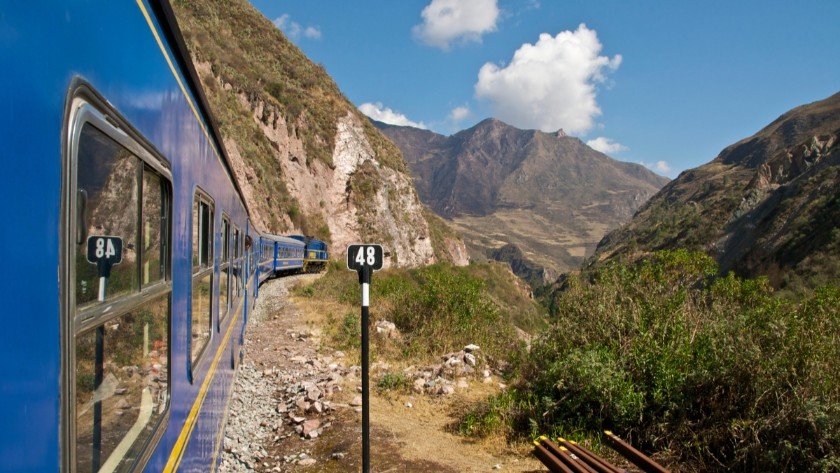
First off, you can catch a train from the city of Cusco. This was my chosen route and the scenic ride is absolutely worth it. The train takes you to Aguas Calientes, the town at the foot of Machu Picchu. From there, you can hop on a bus that will take you straight up to the ruins.
Inca Trail

If you’re feeling more adventurous, you might want to try the famous Inca Trail. It’s a four-day hike through the Andes with some of the most stunning views you’ll ever see. The trail itself starts at Piscacucho, also known as Kilometer 82, and ends at Machu Picchu. Keep in mind that you’ll need to book a permit in advance for this route.
Salkantay Trek

Then there’s the lesser-known Salkantay Trek. It’s longer than the Inca Trail (about 5 days), but less crowded and equally beautiful. I haven’t personally done this one, but I’ve heard rave reviews from friends. The trek starts in Mollepata and also ends at Machu Picchu.
Bus
If you’re short on time or not much of a hiker, there’s always the option of a direct bus from Cusco to Aguas Calientes. It’s the easiest way, but you’ll miss out on the amazing landscapes.
Weather conditions in Machu Picchu
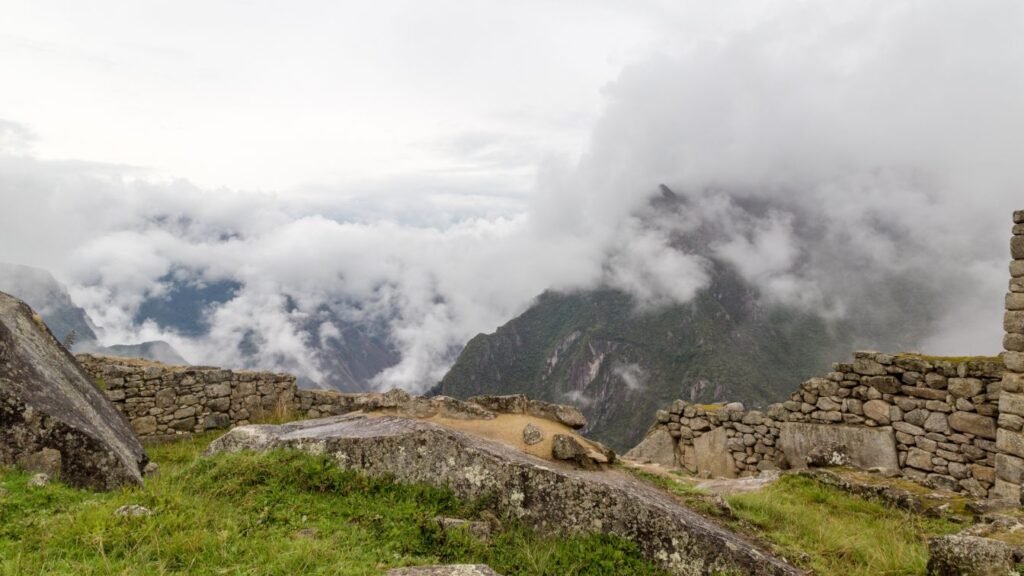
Rainy Season (November to March)
During this time, you’ll see a lot of rain, and I mean a lot. I had to use a waterproof jacket and boots constantly. So, if you’re planning to hike during these months, make sure to pack some rain gear.
Dry Season (April to October)
This is the best time to visit Machu Picchu. You’ll get clear skies and warm temperatures. But remember, it can still rain even during the dry season. The day temperature can reach up to 68°F (20°C), while at night it can drop to 54°F (12°C).
Dress in Layers
The temperature can change quickly throughout the day. It can be chilly in the morning, hot in the afternoon, and cold at night. So, dress in layers. It gives you the flexibility to add or remove clothing as needed.
What Not to Carry on Your Trip to Machu Picchu

To preserve the site, there are certain items that are not allowed inside Machu Picchu. These include:
- Oversized Backpacks: Leave those gigantic backpacks at home. You know, the ones that are larger than 16x14x8 inches (40x35x20 cm)? They won’t let you through with them.
- Drones: Sorry drone enthusiasts, but Machu Picchu is a no-fly zone for your tech toys. Drones are strictly prohibited and can be confiscated if found.
- Umbrellas and Banners: Umbrellas and banners aren’t allowed either. If you’re worried about the sun, a good old-fashioned hat or cap will do the trick. And let’s face it, banners are just a nuisance to others trying to enjoy the site.
- Baby Carriages: Those with little ones, please note – baby carriages are off-limits. Consider a baby carrier instead. It’s a more practical option for exploring the ruins.
- Musical Instruments: If you were hoping to serenade the ancient ruins with a tune, I hate to be the bearer of bad news, but musical instruments are prohibited.
- Selfie Sticks and Tripods: Selfie sticks and tripods are also not allowed. But don’t worry, you can still capture amazing photos without them. Just ask a friendly fellow traveler to take your picture. Or, if you’re traveling solo, use the self-timer on your camera or phone.
- Large Amounts of Food: You can bring snacks, but large amounts of food aren’t permitted. And remember, don’t litter! Keep Machu Picchu beautiful for future visitors.
- Single-Use Plastic: This includes plastic water bottles. It’s better to carry a reusable water bottle with you. Not only is it better for the environment, but you’ll also save money on buying multiple plastic bottles.
- Alcohol and Tobacco Products: Alcohol, tobacco, ‘vaping’ devices, and electronic cigarettes are also on the banned list. It’s a good opportunity to take a break from these habits and fully immerse yourself in the beauty of Machu Picchu.
Importance of Acclimatization to the Altitude
Machu Picchu sits at a staggering 7,972 feet (2,430 meters) above sea level. That’s enough to make you dizzy! The higher you go, the less oxygen there is in the air. Your body, used to more oxygen-rich environments, might struggle initially. Symptoms can range from headaches and fatigue to more serious conditions like acute mountain sickness (AMS).
Give Yourself Time
When you’re planning your trip, make sure to include extra days for acclimatization. How many? It depends on the person, but generally, two to three days are recommended. Taking this time is better than trying to push through and risking your health.
Stay Hydrated
Drinking plenty of water is key. High altitudes can cause dehydration, which can worsen altitude sickness symptoms. Carry a refillable water bottle with you at all times and drink regularly.
Slow and Steady
Do everything at a slower pace. Yes, that includes walking, talking, and even eating. Your body is working hard to adjust to the new environment, so don’t rush it.
Medication Can Help
There are medications available that can assist with acclimatization. For example, Diamox is often recommended by doctors.
Recognize the Symptoms
Headache, dizziness, fatigue, loss of appetite – these can all be symptoms of altitude sickness. If you experience any of these, don’t ignore them. Rest, hydrate, and if symptoms persist, seek medical attention.
Cusco – Your Acclimatization Hub

Before you hit the trail to Machu Picchu, spend a few days in Cusco. At 3,399 meters, it’s an excellent place for your body to adjust to high altitudes. And there’s plenty to see and do while you’re acclimating! Visit the historic city center, explore the markets, and indulge in delicious Peruvian cuisine. You won’t regret it!
Conclusion
Machu Picchu’s climate is known to shift quickly from misty mornings, sunny afternoons to cool evenings. This makes it essential to opt for clothing that can be layered and is quick to dry. Lightweight, moisture-wicking materials like polyester or nylon are ideal as they provide comfort and adaptability throughout your journey.
From the breathtaking sunrise over Sun Gate to the intricate stonework of the ruins, every moment at Machu Picchu is a testament to the ingenuity and spirit of the Incan civilization. Dressing appropriately ensures you can enjoy these moments without distraction, making your trek not just a hike, but a journey through history.
FAQs (Frequently Asked Questions)
Do You Need Hiking Pants for Machu Picchu?
Yes, it’s recommended to have hiking pants for Machu Picchu. Specifically, if you’re going to be trekking, sturdy hiking trousers are very useful. However, the necessity varies depending on the length and intensity of your trek. For instance, one pair is usually sufficient for 3/4 day treks, but an additional pair might be ideal for treks greater than 4 days.
Can a Beginner Hike Machu Picchu?
Yes, a beginner can hike Machu Picchu. But you should be in reasonably good physical shape and prepared for the challenge. Some trails, like the Short Inca Trail, are more suited to beginners.
Can I Wear Shorts to Machu Picchu?
Yes, you can wear shorts to Machu Picchu but they may not be the best choice due to bugs and potential sunburn.
Are Backpacks Allowed in Machu Picchu?
Yes, backpacks are allowed in Machu Picchu, but they cannot exceed the dimensions of 40 × 35 × 20 centimeters or 15 x 13 x 8 inches. Any backpack larger than this will need to be stored in lockers.
Do You Need a Jacket for Machu Picchu?
Yes, it is recommended to bring a jacket to Machu Picchu. The weather can be unpredictable and it can get quite chilly, especially in the morning and evening.


